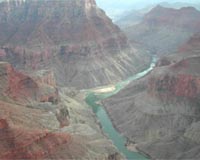| . |  |
. |
Canberra, Australi (SPX) Oct 13, 2010 The delivery of sustainable water supplies in Australia will require water managers and engineers to factor in a range of predicted variations in climate and long-term demand for water resources, according to a CSIRO climate and water expert, Dr Francis Chiew. "With an expected decline in water availability in parts of Australia comes the need for more reliable quantification of historical and likely future water availability," Dr Chiew said in an address to the Practical Responses to Climate Change Conference in Melbourne. "Predictions of future water availability and runoff characteristics are improving rapidly with more data becoming available and with the rapid progress in climate and water science. "However, the range of plausible future projections is likely to remain large. "Water planning and management decisions always need to consider the balance between risk and rewards, and whether the system can adapt to climate change and other factors affecting water availability such as water interception activities like farm dams, plantations and other types of development." Dr Chiew said tools for estimating climate change impacts on water availability ranged from simple rules of thumb to modelling based on Global Climate Model projections, downscaling of climate model projections to catchment-scale climate, and hydrological models. Recent unprecedented low stream-flows recorded in parts of Australia had shown that current water management plans are inadequate to deal with the high variability in water availability, whatever the root cause. "There is evidence linking the 'shift' in the hydroclimate in the far south-west and south-east of Australia to climate change. However, it is difficult to separate a climate change signal from the high natural variability," Dr Chiew said. "Projections from climate models suggest that southern Australia is likely to be drier on average in the future and that extreme rainfall events are likely to be more intense in the future. The drier conditions have implications for water security and the more intense extreme rainfall events have implications for flood design and on related water quality problems, particularly in high-runoff events following long dry periods." Climate change represented a major and complex challenge for water planning, but it was not the only challenge. "Climate change needs to be considered in the context of other drivers such as water interception activities, existing levels of water use and proposed development activities, and the complex interactions between these and a whole range of other factors," Dr Chiew said.
Share This Article With Planet Earth
Related Links CSIRO Land and Water Water for a Healthy Country Flagship Water News - Science, Technology and Politics
 Ancient Colorado River Flowed Backwards
Ancient Colorado River Flowed BackwardsPalo Alto CA (SPX) Oct 13, 2010 Geologists have found evidence that some 55 million years ago a river as big as the modern Colorado flowed through Arizona into Utah in the opposite direction from the present-day river. Writing in the October issue of the journal Geology, they have named this ancient northeastward-flowing river the California River, after its inferred source in the Mojave region of southern California. Le ... read more |
|
| The content herein, unless otherwise known to be public domain, are Copyright 1995-2010 - SpaceDaily. AFP and UPI Wire Stories are copyright Agence France-Presse and United Press International. ESA Portal Reports are copyright European Space Agency. All NASA sourced material is public domain. Additional copyrights may apply in whole or part to other bona fide parties. Advertising does not imply endorsement,agreement or approval of any opinions, statements or information provided by SpaceDaily on any Web page published or hosted by SpaceDaily. Privacy Statement |